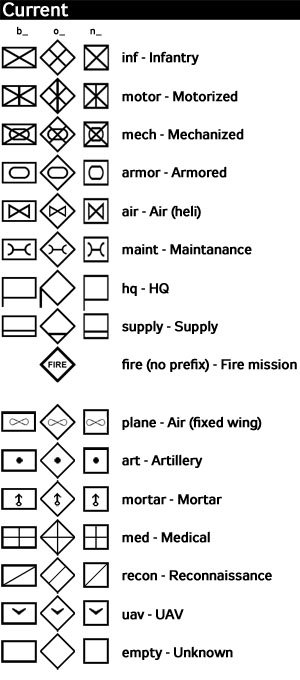Invasion of Ukraine and Military Maps (#221)
Today, July 5, 2022, is D+131 in the Russian Invasion of Ukraine. The Oryx Website reported that Russia has lost 831 tanks since the war began. To put this in perspective — in the Active Duty US Army there are 12 Armored Brigade Combat Teams each with 87 tanks (1,044 M1A2 Abrams). If the US lost the same amount of tanks, every tank in 9+ of the Armored Brigade Combat Teams would be destroyed.
The US Army defines a map as “a graphic representation of a portion of the earth’s surface drawn to scale, as seen from above.” Most people don’t use a map anymore — Google Maps, Waze, and Apple Maps have helped me navigate in the U.S., Germany, Austria, and Singapore in the past year. Yet, to better understand the war in Ukraine, it really takes a map to visualize the conflict. This blog post will help you better understand military maps that are being used to describe the fighting in Ukraine. It also continues the crowd sourced Battle Damage Assessment update since the beginning of the Russian Invasion of Ukraine.
Visualizing the Fighting
Maksym Melnychuk, a YouTuber, created a video of a daily maps of the conflict so you can visualize the fighting over time. He used Ukraine War Mapper (Twitter @War_Mapper) daily maps of the conflict to create the video. The Ukraine War Mapper maps are very basic maps — they just use colors to depict the Russian advances. Purple is occupied terrain before February 24, 2022, red is Russian occupied terrain since the war started, and pink is where the fighting is occurring on that day.
Basic Map Information
Currently, the War in Ukraine has a front of 2,450 kilometers (1,522 miles) of which 1,105 (687 miles) are active fighting. I define active fighting as the area where combat is happening from Kharkov to Severodonetsk to Kherson. Jomini of the West’s (Twitter @JominiW) maps are a great resource to help you understand the war in more detail than Maksym’s YouTube video.
When you start looking at a military map, always look at the legend first. The map legend identifies the symbols used to depict the prominent natural and manmade objects that exist on the ground. These symbols are not the same on every map. The legend (like @JominiW uses) will also identify the unit and other symbols used to depict the conflict as well. For example, @JominiW only uses tan to depict the Ukrainian territory occupied prior to February 24, 2022. Alsom @JominiW’s maps don’t use the red and pink to show currently occupied Ukrainian territory. Second, locate the north seeking arrow (bottom right in the map below). Third, look for the scale. The scale gives you the ratio of the distance on the map to the distance on the ground. Unfortunately, @JominiW doesn’t use a scale.
@JominiW Map — 27 JUN 2022
Units are depicted on the map using symbols. Russian units are in red, Belarusian units are yellow, and Transnistrian units are orange. Ukrainian units are in green. The Russian untis are depicted as diamonds. This traditionally means they are the enemy. Friendly forces, or Ukrainian units are depicted as rectangles.
Each symbol within the diamond or rectangle identifies the type of unit. An “X” inside the diamond or rectangle means it is an infantry unit. An oval inside the diamond or rectangle means that it is an armored or tank unit. Combining the X and an oval inside the diamond or rectangle means that the unit is mechanized infantry (mechanized infantry fight from BMPs). Other useful symbols to know are:
Once you understand what the unit is by the symbol inside the rectangle or diamond, then it is helpful to understand symbology above the units that tells you the size of the unit. Also, the name of the unit is typically to the right of the symbol.
Combined Arms Army (CAA) — Symbolized by XXXX above a unit on the map, the Army Group system was developed by the Soviets during World War II, when the echelons of corps and armies were merged together. Army Groups typically have several motorized rifle and tank divisions and brigades; headquarters, artillery, air defense, reconnaissance, and MTO (logistics) brigades; and an engineering regiment and a NBC defense regiment. These formations have over 20,000 soldiers in them.
Divisions — symbolized by XX above a unit on the map, these formations have about 8,500 soldiers and resemble Soviet-era divisions, with three motorized rifle regiments and one tank regiment (for a motorized rifle division (MRD)) or three tank regiments and one motorized rifle regiment (for a tank division) plus supporting units.
Brigades — symbolized by X above a unit on the map, these formations typically have 3,000-4,500 soldiers.
Battalion Tactical Groups — symbolized by II above a unit on the map, these formations typically have 600 soldiers. See Invasion of Ukraine, D+15, SITREP for more details on the BTG.
Other Maps
Jomini of the West publishes a very high fidelity map once a week. Other groups, like the Institute for the Study of War, Nate Russer, and Ukrainian War Mapper publish lower fidelity maps more often. Each uses colors to depict the fighting and you can’t see the individual units.
FIRMS
One of the things I learned watching this conflict is that the National Aeronautic and Space Administration (NASA) has satellites that track fires around the globe and publish the information on an open source website.
Many of the Open Source Intelligence (OSINT) sites or twitter feeds rely on NASA’s Fire Information for Resource Management System or FIRMS to track the fighting. FIRMS distributes Near Real-Time (NRT) active fire data within 3 hours of a satellite observing the fire from the Moderate Resolution Imaging Spectroradiometer (MODIS) aboard the Aqua and Terra satellites, and the Visible Infrared Imaging Radiometer Suite (VIIRS) aboard S-NPP and NOAA 20 (formally known as JPSS-1). The raw active fire / hotspot data can be viewed in FIRMS FIRE MAP or in NASA’S WORLDVIEW.
Basically, the OSINT analysts use FIRMS data to identify the heat/fire from artillery or rockets exploding to confirm where the frontline between Ukrainian and Russian forces are. For example, on June 26, the orange circles depict the impact of indirect fire along the frontlines. There are limitations to the FIRES system — when there is heavy cloud cover over Ukraine, the satellites do not pick up as much of the firing between Ukrainian and Russian forces.
Total Russian BDA (As of July 4, 2022 at 15:00 EDT) via the Oryx Website
Russian forces have lost since the war began:
831x T-64/72/80/90s Tanks damaged, destroyed, abandoned and captured (⬆️ 42)
Average of 6.3x tanks damaged, destroyed, abandoned and captured per day
1,217x BMPs/BTRs/BMDs (Armored Personnel Carriers) damaged, destroyed, abandoned and captured (⬆️ 53)
Average of 9.3x BMPs/BTRs damaged, destroyed, abandoned and captured per day
172x Engineer Vehicles damaged, destroyed, abandoned and captured (⬆️ 5)
303x Mortars, Howitzers, and Multiple Rocket Launchers damaged, destroyed, abandoned and captured (⬆️ 34)
86x Air Defense Artillery Weapons or Surface to Air Missile Vehicles damaged, destroyed, abandoned and captured (No Change)
246x MT-LB ACRV (Command and Control) damaged, destroyed, abandoned and captured (No Change)
For More Information on the Conflict:
Invasion of Ukraine, Indirect Fire Assets
Invasion of Ukraine, Air Assault
Invasion of Ukraine, River Crossing
Invasion of Ukraine, D+103 SITREP
BTGs, OoB, and Crowd Sourced BDA in Ukraine, D+11
Conclusion
Want even more? Reach out to me me here for a virtual talk to your group or company on the Invasion of Ukraine and its tactical and strategic implications.
Want something different? In my day job, I’m an executive coach and leadership consultant. I published a book last summer on how to develop your perseverance and accomplish your goals — Grow Your Grit, available for sale at Amazon. Or reach out to me here to start the discussion about executive coaching opportunities.
Use your deeper awareness of the invasion of Ukraine to go on the offensive and follow the conflict with better insight.





